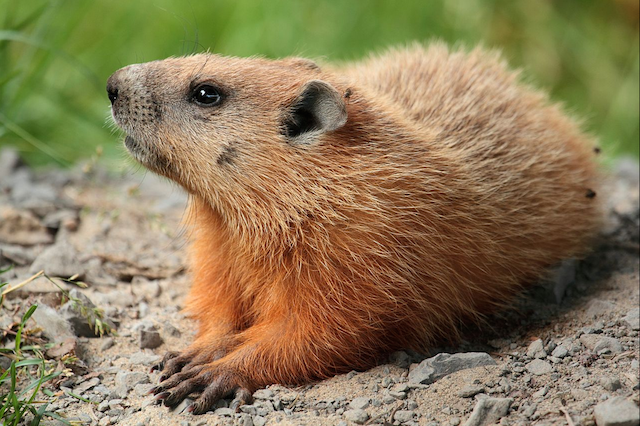Many of us enjoy celebrating yearly traditions–we like watching the classic movie “Ground Hog Day” on February 2nd. Well, why do we take note of this day at all? I’m not the first to ask this question! A little research reveals that what we now call “Ground Hog Day” came with the arrival of those German immigrants who came to Pennsylvania back in the 1700’s and brought along their own traditions from the Old Country. And, this particular tradition derives from Pagans, Christians and the natural tendency of farming communities to look for planting clues.
At one time, the European bear was widespread throughout that continent and was strongly associated with humankind and the desire to emulate its power and ferocity. Bears were a totem animal and there was a strong belief in shapeshifting–the ability of a person to become a bear. Bears also hibernate and their emergence was given great import. Humans looked for similarities in the more familiar plant and animal kingdoms that would reveal how great natural forces (like the more unreadable weather and distant Gods) would impact them. When the European bears became more scarce, badgers would take their place. Here is an German poem:
For as the sun shines on Candlemas Day,
So far will the snow swirl until May.
For as the snow blows on Candlemas Day,
So far will the sun shine before May.
Basically, if the badger emerged on a sunny day, a shadow would be cast and it predicted a lasting winter (6 more weeks), so hunker down, was the message. A cloudy day meant no shadows would be seen, thus an “earlier” spring with potential for getting to the work of planting and spring related chores.
Why February 2nd? In ancient Greece and Rome, who would export much of their culture throughout Europe, early February was met with celebratory festivals in anticipation of Spring. After all, February is midway between the Winter Solstice and the Spring Equinox. Early Christians would celebrate the purification of Mary with Candlemas, the blessing of church candles and those which would be distributed to believers, bringing light to winter darkness. (And winter would have been particularly dark and full of fear in those days–we take our well lit electricity-powered lives so for granted!)
When the emigrating Germans arrived in Pennsylvania, there was no equivalent to the badger, but there was the ubiquitous woodchuck or “groundhog”–a native ground squirrel, that also hibernates. As it happens, the chuck generally emerges from its winter torpor in Pennsylvania around February 4, which fits closely with the Candlemas date with which it had been associated in Europe. However, hibernation periods further north increase in length to match the duration of winter. So, if the majority of early Germans had located en mass somewhere like Massachusetts, “Groundhog Day” wouldn’t have fit nearly as well with their tradition, since it wouldn’t be until early March before the critters would first deign to emerge! No doubt climate change will also have an effect!
Eventually, a local newspaper in Punxatawney, PA first promoted Ground Hog Day to the point that in 1887, it became a national holiday with the largest celebration held right there in Punxatawney.



